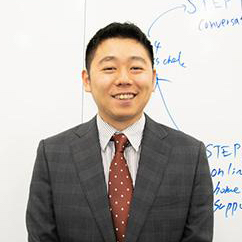Tips for More Effective Studying
Nihongo Online School > Tips for More Effective Studying > Lesson 3~があります/います There is~/ There are~
Lesson 3~があります/います There is~/ There are~

2023/09/17
Lesson 3~があります/います There is~/ There are~
Here, we learn two ways to show existence in Japanese using the verbs arimasu (for non-living things) and imasu (for living things).
■There is/are… ~があります、~がいます
when referring to people or animals →you should use がいますwhen referring to objects →you should use があります
①〜⑤ When referring to people or animals, you should use “ga imasu=が います”.
⑥〜12 When referring to objects, you should use “ga arimasu=が あります”.
Let’s explain ①〜⑤
①(ひと)がいます
Hito ga imasu. There are people.
②猫(ねこ)がいます
Neko ga imasu. There is a cat.
③虫(むし)がいます
Mushi ga imasu. There is an insect.
④鳥(とり)がいます
Tori ga imasu. There is a bird.
⑤魚(さかな)がいます
Sakana ga imasu. There is fish.
Let’s explain ⑥〜12
⑥木(き)があります
Ki ga arimasu. There is a tree.
⑦山(やま)があります
Yama ga arimasu. There is a mountain.
⑧家(いえ)があります
Ie ga arimasu. There is a house.
⑨(くるま)があります
Kuruma ga arimasu. There is a car.
⑩りんごがあります
Ringo ga arimasu. There is an apple.
11 ペンがあります
Pen ga arimasu. There is a pen.
12 星(ほし)がありますHoshi ga arimasu. There are stars.
■【place】に【N】があります/います
This is used to say that a person or an object exists in a certain place. “Pにありま す”is for objects, and “Pにいます”is for people/animals.
Pに N が あります/います
P ni N ga arimasu / imasu
There is something or somebody somewhere.

・こうえん に おんなのひと と おんなのこ がいます。
Kouenni, onnanohito to onnanoko ga imasu.
There are a woman and a girl in the park.
・こうえん に いぬ がいます。
Kouenni, inu ga imasu.
There is a dog in the park.
・こうえん に き があります。
Kouenni, ki ga arimasu.
There are trees in the park.

・ へや に おとこのひと がいます。
Heyani, otokonohito ga imasu.
There is a man in the room.
・へや に ねこ がいます。
Heyani, neko ga imasu.
There is a cat in the room.
・ へや に ベッドとテーブル があります。
Heyani, bed to table ga arimasu.
There are a bed and a table in the room.
In this blog, you learn two ways to show existence in Japanese using the verbs arimasu (for non-living things) and imasu (for living things). Let’s keep up studying!
See you in the next lesson!

